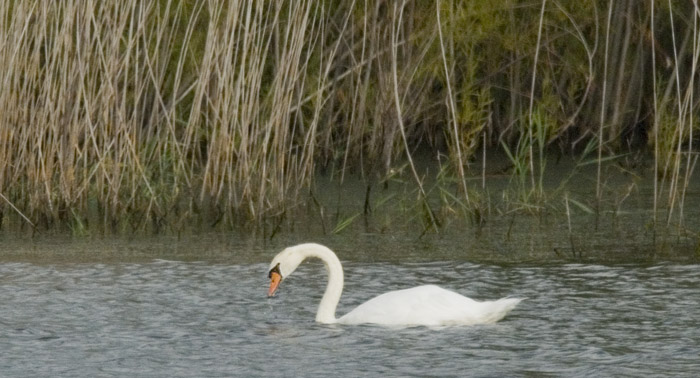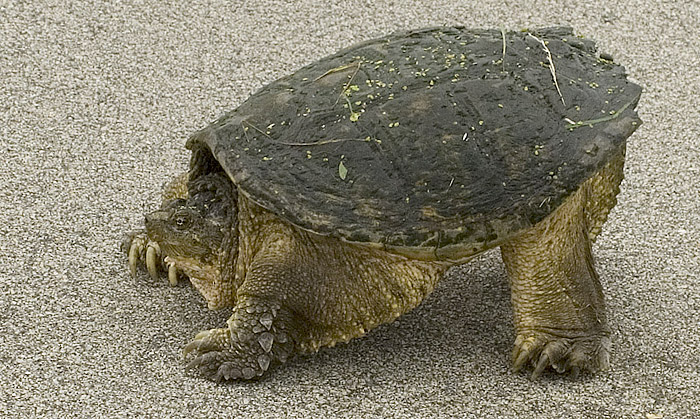Peoria Audubon Society is a local affiliate of both:
National Audubon Society & Illinois Audubon Society

Birding the Illinois River: Emiquon
Field Trip: Sat. Aug. 14, 2010 Page 1 2 Next
Photo Gallery:
Many thanks to Mike Miller and Susie Grana of the Peoria Park District and Maury Brucker of the Peoria Audubon Society for organizing and leading the Birding along the Illinois River field trip. We filled two 15-passenger Peoria Park District vans and a smaller van with food and drinks for a day of birding. The timing in early to mid-August was to match the peak of the fall shorebird migration south.
Although Mike and Maury have organized this trip before, this time we elected to stay on the west side of the Illinois River as we left Peoria. Our main destination was the Emiquon wetland restoration south of Peoria. This restoration project by The Nature Conservancy is one of the largest floodplain projects in the country outside the Florida Everglades.
Along the way, we visited a few other locations that Maury had scouted out during the two previous weeks of birding.
Dennis, humble webmaster of Peoria Audubon Society, recorded the event by taking photos along the way.

Peoria in Early Morning Haze
We stopped off briefly near the Eastport Marina in East Peoria to check for any unusual gulls. Although the Peoria skyline was poking out of the mist, the unusual gulls were elsewhere.
As we motored along, Dennis brought along a number of FRS radios so that all in the convoy could keep in touch for any birds that the other vehicles would come across. Maury provided a narration of local sites and interests as we passed.

Mute Swans at Banner Marsh
At Banner Marsh, we viewed a number of Mute Swans - which are not native to North America. Dennis indicated that the swans are starting to become problematic in some areas as these aggressive birds may successfully compete for a choice habitat. Maury indicated that a recent study showed no harm at the present time, but the situation is continuing to be monitored.

Mute Swan at Banner Marsh
Maury explained that the Mute Swans were brought over from Europe in the late 1800s. Note the orange in the bills, which differentiates them from our native swans.

Great Egret at Emiquon
We finally reached the Emiquon wetland restoration near Havana on the West side of the river.

Lesser Yellowlegs, Killdeer and Goldfinches
At Emiquon, with the water table lowered to help enable an construction of a facility road, a number of mudflats were exposed. And, the numerous shorebirds were taking advantage of the habitat.
With the Lesser Yellowlegs, note the length and "slender-nature" of the neck to help identify the bird. With Sandpipers, the bill would be somewhat shorter and the neck would have appeared more substantial.

Great Egret Landing at Emiquon
A Great Egret came in for a landing in the mudflats.

Great Egret (Close-up): Emiquon
With all the bird activity - especially with much of the distance, it was time to bring out the spotting scopes.

Bring out the Scopes at Emiquon
Everyone had a chance to look through the spotting scopes.

Taking Turns Watching the Birds
Numerous swallows were feeding over the water and vegetation. A number of tree swallows took time to rest in a small tree that was out in the shallow water near the shore.

Tree Swallows Perched at Emiquon
Several birders walked out on one of the flats for a closer view of the birds and to take photographs.

Getting a Little Closer for Better View/Photo
On the opposite shore, which, was close to two miles in the distance, a flock of White Pelicans were resting. The images below are heavily cropped from a long telephoto image. With the heat of the day, the thermals were rising that caused some distortions in the distance.

Flock of White Pelicans on Opposite Shore at Emiquon
A few fishermen were out taking advantage of the recently opened access to the lake.

Fishermen at Emiquon; White Pelicans in Distance
After we left Emiquon, on the road toward Dixon Mounds, we had to stop on the road to avoid running over a very large - and very "grumpy" - snapping turtle. When we first stopped and Susie, our driver, got out, the snapping turtle became very aggressive. Note the raised hind legs in the image below. From this position, the threatened snapper made a "jumping attack" at Susie. Dennis said that it "looked as if the head of the turtle was at least a full foot off the ground. This is not an exaggeration."

Snapping Turtle - Posed for Attack
Only after evaluating the above image did it seem possible. As we moved around the turtle, when we got closer, the turtle raised its rear up to its highest point. Dennis speculated that the turtle deliberately raises the rear as much as possible to prepare for the attack. Then, the front legs are positioned slightly forward.
The "attack" movement seemed involve the rear legs pushing the turtle forward while simultaneously raising the front and extending the neck with open mouth as far as possible. It was an incredible sight to behold. We felt sorry for the turtle and only wanted it to be safe.

Snapping Turtle Roadblock versus Susie Grana
Anyway, after the first attack, Susie could only stand back and look.

Emiquon Snapping Turtle Reluctantly 'Awaiting' Rescue
The Standoff ended as the turtle kept facing Susie, which allowed Dennis to grab the animal by the tail and carry him/her over to the grass on the side. Although the turtle was not happy, this was for its own safety.